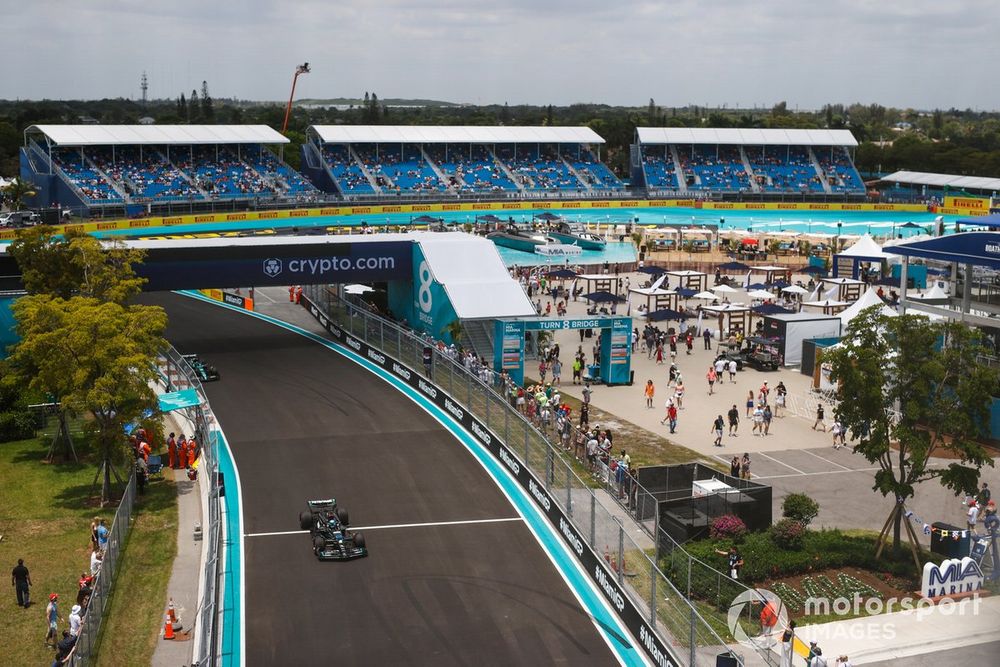Such was the determination to get things sorted for this year that Miami F1 chiefs brought in famed track design company Tilke to resurface the Hard Rock Stadium venue.
However, as F1 made its return to the American track, the same complaints returned as drivers bemoaned the unique nature of the surface.
Sergio Perez said that grip had been so low on Friday that it was almost intermediate territory, while a number of drivers really struggled with how dirty things were once they strayed just a few centimetres off-line.
Mercedes driver George Russell said after qualifying that he felt there had been no step forward in the track situation.
“For me, it’s been no improvement on last year,” he said. “On-line, it’s good grip, but as soon as you put one wheel wide, there’s no grip. So overtaking is going to be really challenging.”
F1 tyre supplier Pirelli is perhaps best placed to judge the interaction between track surface and tyres, with its head of F1 Mario Isola explaining what it has found this weekend.
Pirelli conducts detailed analysis of all tracks on the Wednesday ahead of each weekend and its early conclusion was that grip levels on the racing line were not so bad.
“If we talk about the roughness that we measure, we found that the micro roughness is much lower,” he said.
“Last year it was completely different from any other circuit, much, much higher, and the macro roughness increased a little bit.
“So, we were expecting a level of grip similar to last year. The grip was on the low side but more or less in line with the expectation.”
George Russell, Mercedes F1 W14
Photo by: Andy Hone / Motorsport Images
However, the reality of tyre grip is that beyond the estimates of mechanical grip that comes from the nature of the stones used, there is also an adhesive grip that needs to be taken into account.
This relates to how the tyres’ chemicals react to the surface – which on new venues can be bad because the bitumen that is used to lay the asphalt often results in oils coming to the top.
These oils do not offer anywhere near the same amount of grip as raw stones.
However, this lack of grip can quickly improve as cars running around the track get rid of this surface layer – which is what happened in Miami as grip ramped up Friday to Saturday.
“The grip increased by roughly 10% and that was expected,” said Isola.
However, the increase in grip caused its own problem because the improvement was only on the racing line…
Click Here to Read the Full Original Article at Motorsport.com – Formula 1 – Stories…

